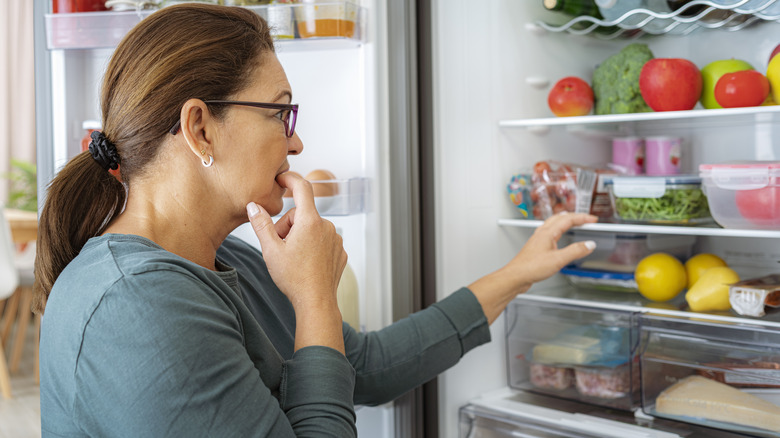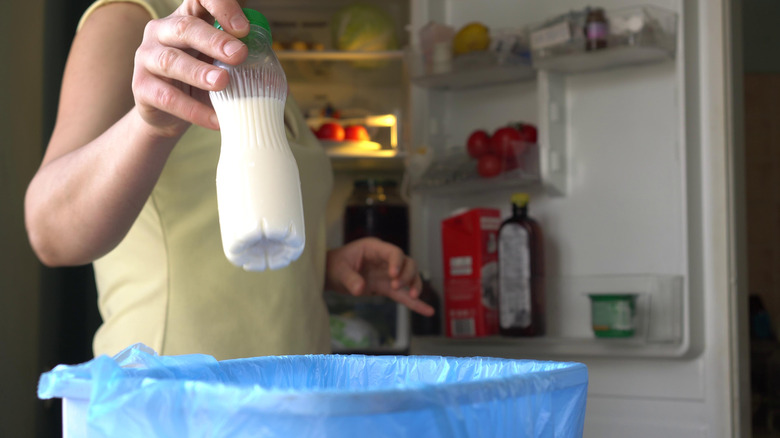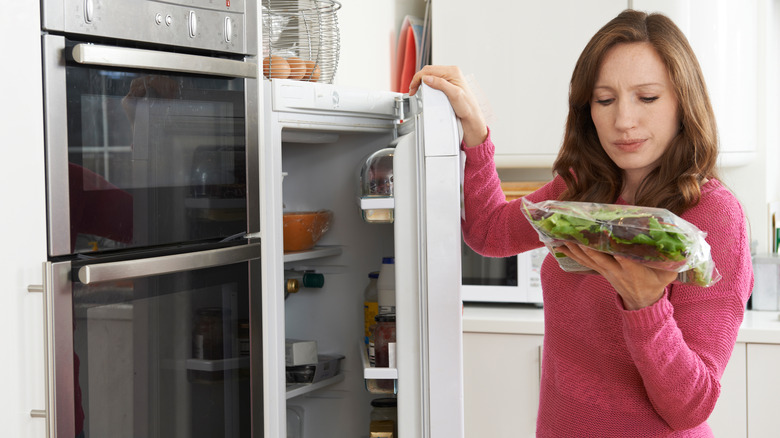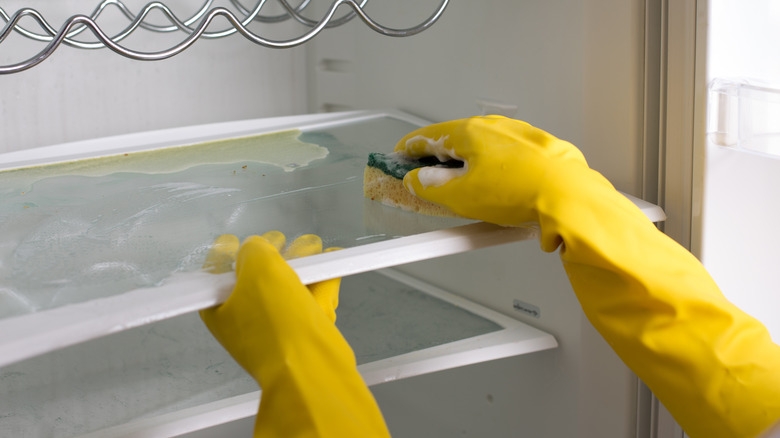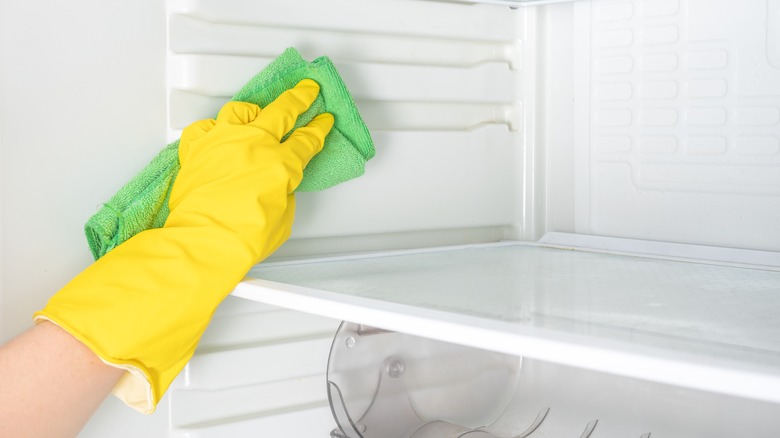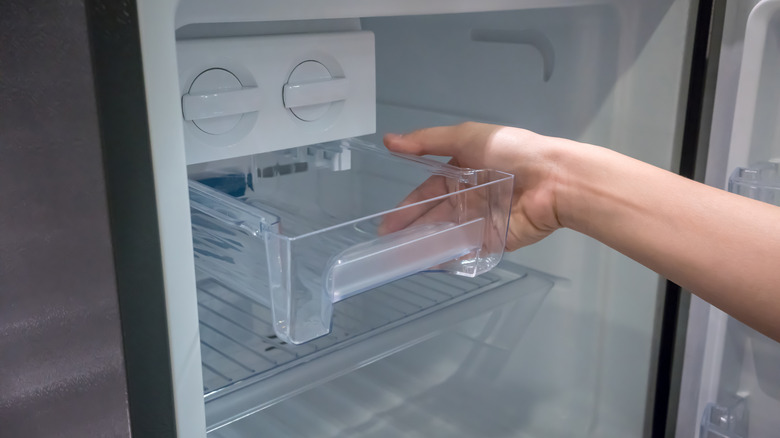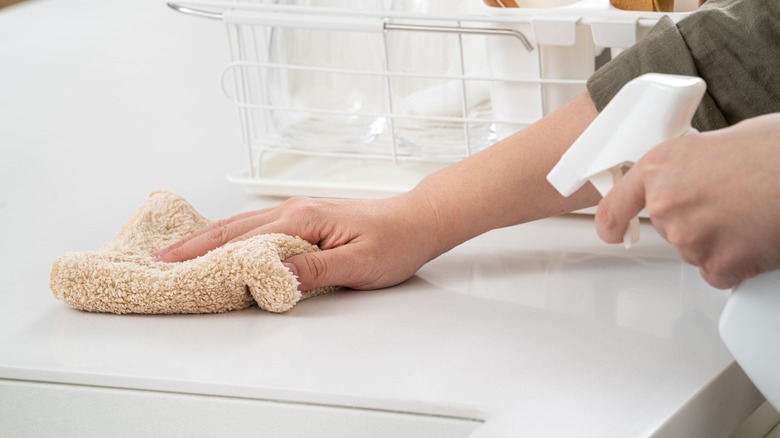Why Your Fridge Needs A Deep Clean After A Food Recall And How To Do It
Food recalls happen dozens of times each year, unfortunately, with many of them impacting fruits and vegetables as well as meats and poultry — in essence, food items often stored in a refrigerator. Since the contaminants can contain nasty bacteria ranging from E. coli to salmonella and listeria, the Centers for Disease Control and Prevention (CDC) encourages consumers not only to throw away affected food products like these as soon as possible but also to clean the refrigerator where they were stored afterward.
A thorough cleaning will remove any germs and bacteria that might migrate from the food or related packaging to drawers or shelves within your fridge. This precaution will help keep you and your family safe, but it's not complicated. All you'll need are bags you can seal (like plastic zipper bags), sudsy hot water, clean towels, and an optional bleach-and-water solution if you want to take your deep clean a bit further and sanitize the shelves or drawers where the food was stored.
Toss recalled food
The first step in cleaning your refrigerator after a food recall is throwing away the food in question along with anything else touching it or stored in the same compartment. This might mean tossing everything in your vegetable crisper, for instance. That may seem drastic, but it's better to be safe rather than risk cross-contamination with bacteria that cause foodborne illnesses.
To do this safely, put these items in sealable bags before placing them in the trash. If the food has already been stowed in another container, but make sure to carefully transfer it to a sealable bag and then wash the container with soap and hot water before using it again.
Take everything else out of the fridge
The next thing you'll need to do is move the rest of the food to your island or a nearby counter or table. Then, remove all the shelves, drawers, and other compartments designed to come out of the refrigerator and let them come to room temperature. Be sure to finish your cleaning within two hours and get food back in the fridge once again to avoid spoiling.
Clean all removable shelves and drawers
After everything's out, remember to clean all the interior parts of your refrigerator. All drawers, shelves, and other components designed to be removed should be thoroughly washed in sudsy hot water, rinsed with clean water, and dried with clean towels. If components are made of glass, make sure they're not still cold when submerging them in hot water to avoid cracking them. Set these components aside on a clean surface while you clean the rest of the fridge.
Clean and, if desired, sanitize refrigerator interior
There are several products perfect for cleaning the inside of your refrigerator, but for this purpose, soapy hot water is all you'll need. Wipe the entire interior of the refrigerator down, including any compartments, doors, and drawers that can't be removed for cleaning. Afterward, rinse all these surfaces with clean water to remove the soap, then dry everything thoroughly with a clean towel.
If you'd like to further sanitize the interior of your refrigerator, add one tablespoon of bleach to a gallon of water and wipe everything down again with a dampened cloth or sponge. Although many homes have stopped using bleach for sanitizing, this is the method recommended by the CDC for this purpose.
Replace drawers, shelves, and food
Once the fridge is completely clean and, if you like, sanitized, you can put all the drawers and shelves you previously cleaned back in place. Place any uncontaminated food you retained back in the refrigerator within two hours from the time you removed it to avoid spoilage.
Final kitchen clean-up
As a last step, wash your hands thoroughly. Then you can use soapy hot water to clean the surfaces that held food, shelving, and other materials while you were cleaning. Before using them again, wash all the towels you used to dry the refrigerator out. By following these steps recommended by the CDC, you can ensure your refrigerator is a safe place to store food after a recall occurs.
